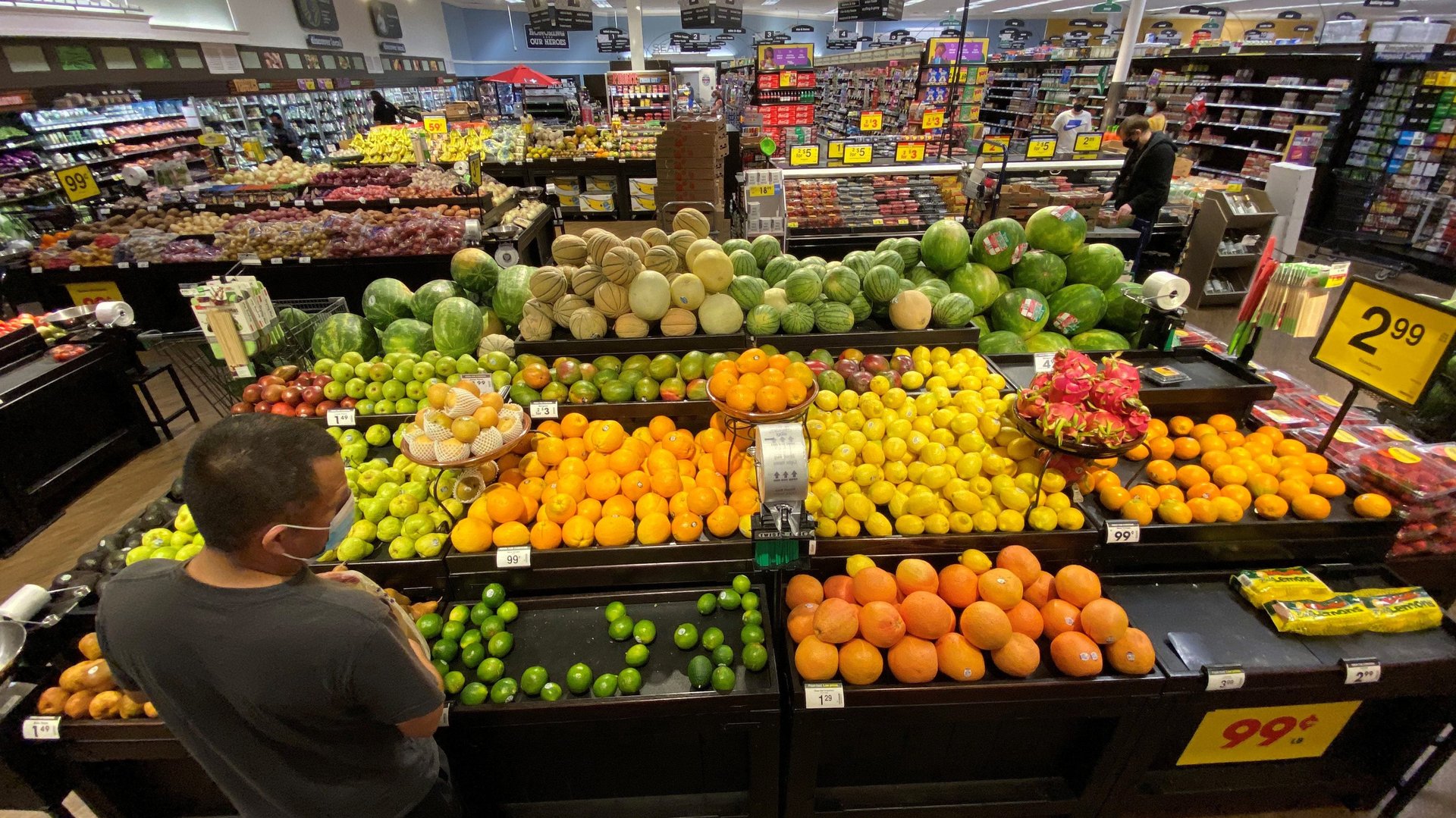How to beat inflation at the grocery store
Inflation continues to hit US grocery stores hard. Prices for groceries were 10.8% higher in January compared to a year before, the fastest year-over-year increase since 1980.


Inflation continues to hit US grocery stores hard. Prices for groceries were 10.8% higher in January compared to a year before, the fastest year-over-year increase since 1980.
The ongoing war in Ukraine is further fueling costly food, as prices for commodities like wheat and fertilizer, which farmers depend on to grow their crops and is a main export from Russia, continue to increase. A US Department of Agriculture report from last week projects less supply and higher prices for grains like wheat and corn, which could further strain the US food supply chain, and push up prices.
Inflation has not affected all food equally, though. Pantry staples that have stayed below the average increase include potatoes, cheese, tea, tomatoes, pasta, bread, ice cream, and fresh, processed, and frozen vegetables.
On the opposite end, price increases for steak and bacon remain in the double digits. High beef prices, fueled by labor shortages, more expensive feed, and high transportation costs, among other factors, have been one of the most visible aspects of high food prices.
As a category, meat has seen the most substantial increases, from poultry to pork chops, ribs, and bacon saw the highest price increases of any grocery store items. The market may be nudging savvy, or at least price conscious, shoppers toward a vegetarian, or flexitarian diet. Protein-rich beans (which are listed under the “other fruits and vegetables including dried” category), saw an increase of 4.94%, below overall grocery prices.
Price fluctuations
In general, food prices are known to be relatively volatile, influenced by factors like agriculture and energy policy, commodity market speculation, extreme weather, rising demand, and decline of surplus storage—just add a pandemic to create a perfect storm.
🎧 For more intel on increasing food prices, listen to the Quartz Obsession podcast episode on fish sticks. Or subscribe via: Apple Podcasts | Spotify | Google | Stitcher.
For instance, the price of flour, is up 10.33%, due to several factors. Last year, a drought across the US Great Plains region reduced the supply of wheat, which is used for all-purpose white flour, coinciding with Americans channeling their energy into baking bread while stuck at home. Meanwhile, coffee prices increased by 8.64%, due to severe weather conditions hitting coffee producers Brazil and Colombia, which reduced the supply of the beans, compounded by supply chain snags, from lack of workers to port congestion. (Hover over or tap any of the lines in the chart below to see the price changes for specific items.)
Another item hit hard by inflation? Citrus fruit, which experienced an increase of 10.61% in January compared to a year ago. Again, the story is about more than just prices. Last month, the US Department of Agriculture forecast that Florida’s orange harvest would produce the smallest crop since 1945, as the state, which is US’s biggest orange producer, was hit hard by a bacterial infection called citrus greening disease. The disease is carried by the invasive insect Asian citrus psyllid, and spreads rapidly, resulting in citrus that becomes small, bitter, and never ripens. If Florida’s crops continue to shrink, high citrus fruit prices could be here to stay.